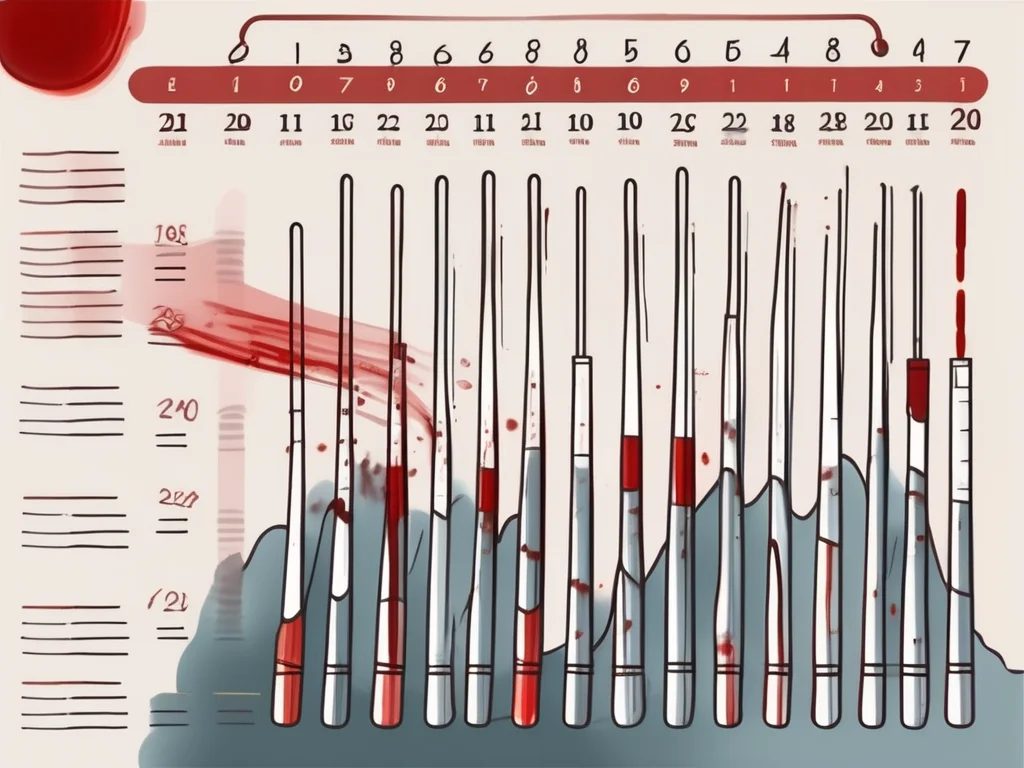Dengue fever, a mosquito-borne viral illness, affects millions in tropical and subtropical regions. One of its critical markers is the platelet count, which often drops due to the infection, leading to a condition called thrombocytopenia. Monitoring platelet count daily is essential for assessing disease progression and guiding treatment. This blog explores how dengue impacts platelet count, the importance of daily tracking, interpreting results, managing the condition, and future advancements in platelet monitoring.
What Is Dengue and How Does It Affect Platelet Count?
What Causes Dengue Fever?
Dengue is caused by four related viruses (DENV-1 to DENV-4), transmitted primarily by Aedes aegypti and Aedes albopictus mosquitoes. Symptoms include high fever, severe headaches, joint and muscle pain, rash, and fatigue. The virus affects multiple organs, including the bone marrow, where platelets are produced, leading to a significant drop in platelet count.
How Does Dengue Cause Thrombocytopenia?
Thrombocytopenia, a hallmark of dengue, occurs due to:
- Viral invasion: The dengue virus suppresses bone marrow function, reducing platelet production.
- Immune response: The body’s immune system destroys platelets while fighting the virus.
- Excessive consumption: Platelets are consumed faster during the infection, especially in severe cases.
This drop is most pronounced during the critical phase (days 3–7 after symptom onset), with counts sometimes falling below 20,000–30,000 platelets per microliter (µL), increasing the risk of bleeding.
Why Is Platelet Count Monitoring Crucial in Dengue?
Why Track Platelet Count Daily?
Daily monitoring of platelet count helps healthcare providers:
- Assess disease progression.
- Identify the critical phase of dengue.
- Determine the need for interventions like platelet transfusion.
- Monitor recovery to ensure platelet levels return to normal (150,000–450,000 platelets/µL).
Regular blood tests, including complete blood count (CBC), provide data on platelets, hematocrit, and white blood cell levels, guiding treatment decisions.
How Does Platelet Count Correlate with Dengue Severity?
Platelet count typically drops a few days after fever onset, reaching its lowest during the critical phase. A rapid decline or persistently low count may indicate severe dengue, requiring closer monitoring. However, mild thrombocytopenia doesn’t always mean severe disease, as spontaneous bleeding is rare unless counts fall critically low.
Tools and Techniques for Tracking Platelet Count
What Are the Common Methods for Platelet Monitoring?
The primary tool for tracking platelet count is the complete blood count (CBC) test, performed using automated analyzers for quick, accurate results. This test measures platelet levels alongside other blood parameters.
Are There Portable Platelet Monitoring Devices?
Emerging technologies include portable devices for home use, allowing patients to monitor platelet counts with a finger-prick blood sample. These devices provide near-instant results, empowering patients to manage their condition actively.
How to Interpret Platelet Count Results in Dengue
What Is a Normal Platelet Count?
A healthy platelet count ranges from 150,000 to 450,000 platelets/µL. Counts below this indicate thrombocytopenia, while counts above suggest thrombocytosis (rare in dengue).
How Do Platelet Counts Fluctuate in Dengue?
Platelet counts in dengue often follow a pattern:
- Early phase: Gradual decline as the virus affects bone marrow.
- Critical phase: Sharp drop, sometimes below 50,000/µL.
- Recovery phase: Gradual increase as the body heals.
Monitoring these fluctuations helps identify trends and guide timely interventions, especially if counts drop rapidly or remain low.
Managing Dengue with Platelet Count Data
How Is Dengue Treated Based on Platelet Count?
Treatment depends on platelet count and symptoms:
- Mild thrombocytopenia: Supportive care like hydration and rest is often sufficient.
- Severe thrombocytopenia: Platelet transfusion may be needed if counts fall below 20,000–30,000/µL or bleeding occurs.
What Is the Role of Platelet Transfusion?
Platelet transfusions are critical in severe dengue to prevent or control bleeding. However, they carry risks like allergic reactions or infection transmission, so they’re used cautiously based on clinical evaluation and platelet trends.
Future Trends in Dengue Platelet Count Monitoring
What Technological Advances Are Being Made?
Researchers are developing innovative tools like point-of-care devices and smartphone apps for easier platelet monitoring. These advancements aim to make tracking more accessible and accurate, especially in resource-limited settings.
How Is Research Improving Dengue Management?
Ongoing studies are deepening our understanding of dengue’s impact on platelets, leading to better diagnostic tools, treatments, and preventive strategies. These efforts promise improved outcomes for dengue patients worldwide.
People Also Ask: Common Questions About Dengue Platelet Count
What Is a Dangerous Platelet Count in Dengue?
A platelet count below 20,000–30,000/µL increases the risk of spontaneous bleeding, requiring immediate medical attention.
How Often Should Platelet Count Be Monitored in Dengue?
Daily monitoring is recommended during the critical phase (days 3–7) to track trends and guide treatment.
Can Platelet Count Return to Normal After Dengue?
Yes, platelet counts typically recover to normal levels (150,000–450,000/µL) during the recovery phase, provided there are no complications.
Are Home Platelet Monitoring Devices Reliable?
Emerging portable devices show promise but should be used under medical guidance to ensure accuracy.
Conclusion
Tracking platelet count day by day is vital for managing dengue fever effectively. By understanding how dengue affects platelets, monitoring counts regularly, and interpreting results, healthcare providers can tailor treatments to prevent complications. Advances in monitoring technology and ongoing research are paving the way for better dengue management, offering hope for improved patient outcomes. Stay informed, monitor regularly, and consult healthcare professionals for timely intervention.



